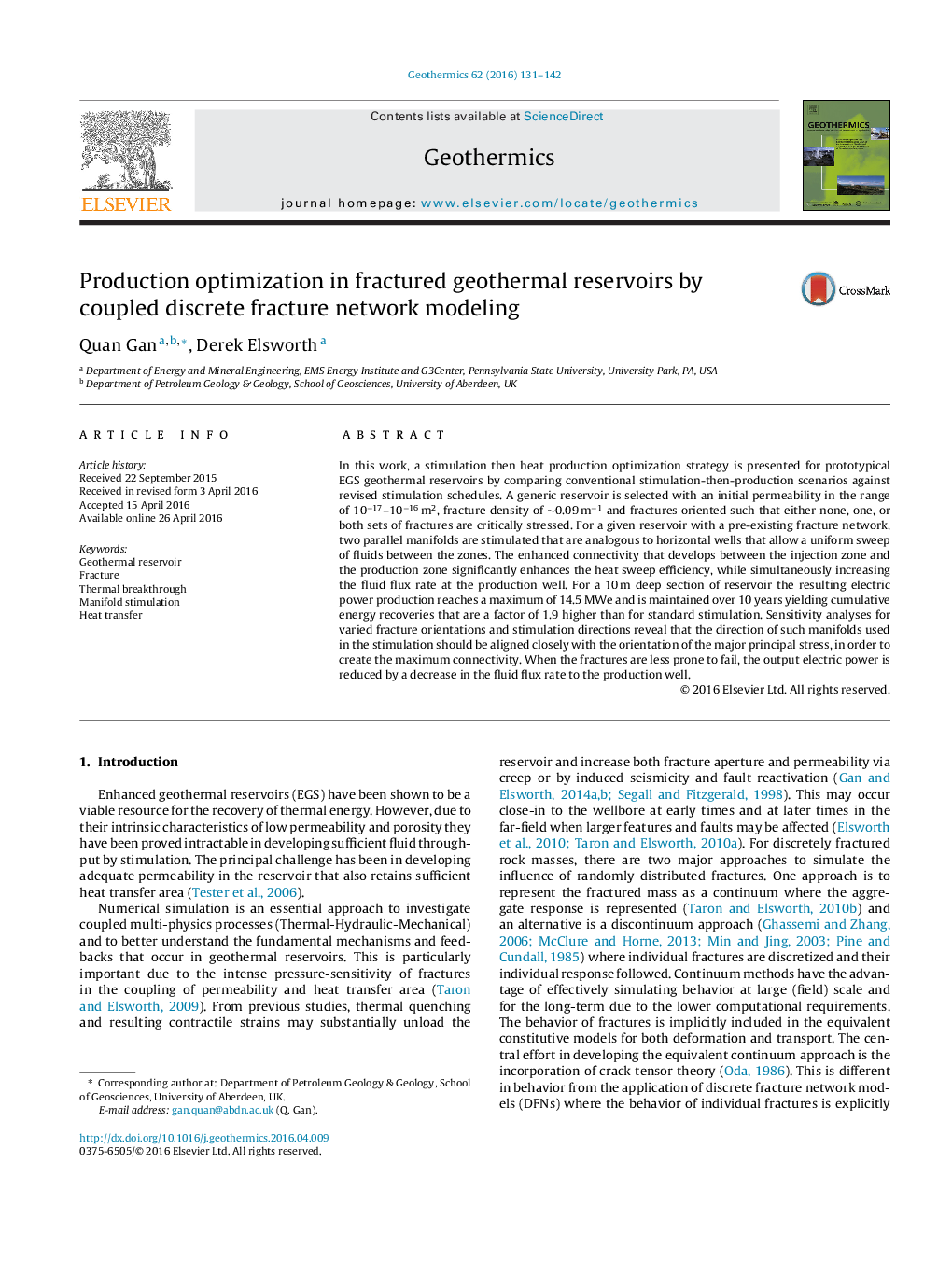| Article ID | Journal | Published Year | Pages | File Type |
|---|---|---|---|---|
| 1742163 | Geothermics | 2016 | 12 Pages |
Abstract
In this work, a stimulation then heat production optimization strategy is presented for prototypical EGS geothermal reservoirs by comparing conventional stimulation-then-production scenarios against revised stimulation schedules. A generic reservoir is selected with an initial permeability in the range of 10â17-10â16Â m2, fracture density of â¼0.09Â mâ1 and fractures oriented such that either none, one, or both sets of fractures are critically stressed. For a given reservoir with a pre-existing fracture network, two parallel manifolds are stimulated that are analogous to horizontal wells that allow a uniform sweep of fluids between the zones. The enhanced connectivity that develops between the injection zone and the production zone significantly enhances the heat sweep efficiency, while simultaneously increasing the fluid flux rate at the production well. For a 10Â m deep section of reservoir the resulting electric power production reaches a maximum of 14.5Â MWe and is maintained over 10 years yielding cumulative energy recoveries that are a factor of 1.9 higher than for standard stimulation. Sensitivity analyses for varied fracture orientations and stimulation directions reveal that the direction of such manifolds used in the stimulation should be aligned closely with the orientation of the major principal stress, in order to create the maximum connectivity. When the fractures are less prone to fail, the output electric power is reduced by a decrease in the fluid flux rate to the production well.
Related Topics
Physical Sciences and Engineering
Earth and Planetary Sciences
Geochemistry and Petrology
Authors
Quan Gan, Derek Elsworth,
